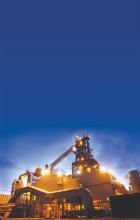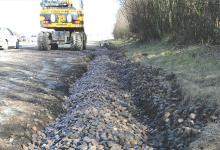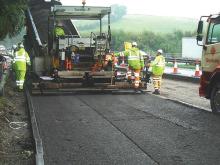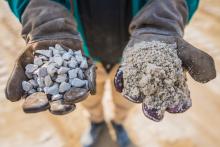
While acceptance of secondary aggregates is growing, there is also a need for legislation to ensure these materials are viewed as a resource not waste
Secondary aggregates were once viewed as second best but now the benefits to the environment and the bottom line are becoming better known and opinions are changing. However, in some regions legislation is labelling these materials as waste, making their use as a resource challenging and in some cases impossible.
Many secondary aggregates are by-products of industrial processes that were not previously used as aggregates and were often landfilled rather than re-used. This legacy means that legislation surrounding some secondary aggregates classifies them as waste and it can be difficult to change this and clients' perceptions of such materials.
In the early days of recycling, secondary aggregates were often viewed a 'dirty' materials and compared to contaminated material because of their waste classification. But testing and increasing knowledge from successful use of secondary aggregates is challenging that.
Introduction of the European aggregates standards has also helped as it placed secondary aggregates as equal to natural aggregates. However, how those standards are interpreted across the region does vary.
Secondary aggregates generally fall into two categories - natural and manufactured. Examples of naturally occurring secondary aggregates includes china clay, sand and slate aggregates and these materials do not usually encounter the issues of waste classification. Where it does often become a problem is with manufactured materials, such as pulverised fuel ash (PFA), spent oil shale and metallurgical slags, as well as construction and demolition waste.
The use of slags demonstrates the regionally variation in acceptance - the markets around iron and steel works are normally very familiar with the use of slags as aggregates but in the wider industry they are still viewed as a waste and this prevents greater uptake Where changes in legislation have been achieved, it has usually started with local negotiation on a site by site and application by application process. Once this has been accepted on a number of occasions, a precedent is usually set and local authorities become more accepting of the classification of these materials as a resource.
Nonetheless, these negotiations can take time and also place the burden of the work on the contractor and require a client that can see the benefit of secondary materials.
Organisations such as the UK-based
The UK has been particularly successful with the use of secondary materials and many local authorities accept the use of slags, such as ground blast furnace slag, as normal additions to road construction materials. This kind of acceptance has helped increase the amount of recycled aggregates used in the UK to 25% of the total aggregate use.
While reaching these levels in other areas is challenging the potential benefits are huge - not only does it allow local reuse of materials that might otherwise be disposed of as waste, it also maintains vital reserves of primary aggregates for premium applications.
"The biggest step towards wider use of secondary aggregates comes from reclassification by environmental authorities of such materials as aggregates and not a waste. But in many applications such materials can be good, if not better than natural aggregates."










